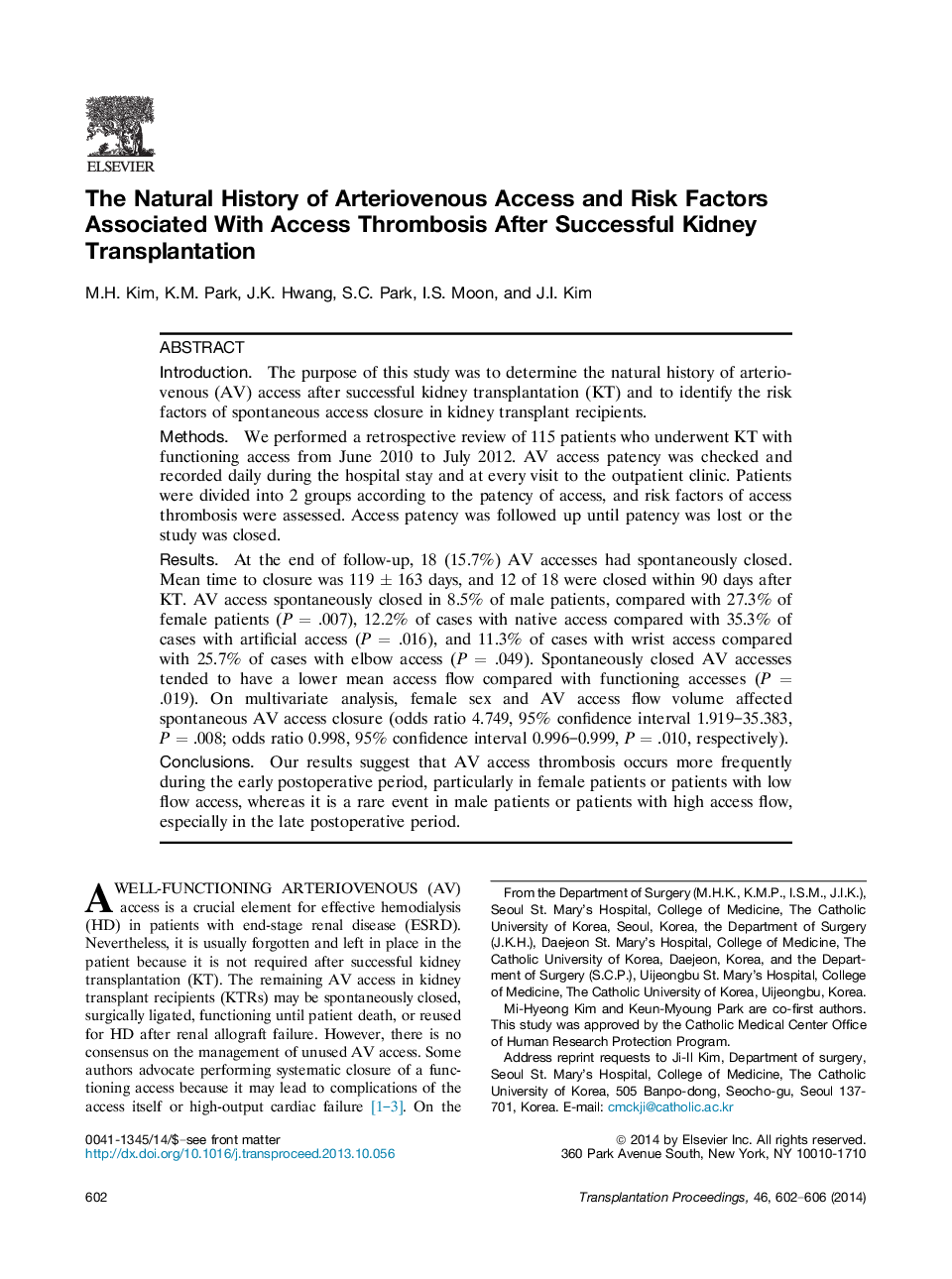| Article ID | Journal | Published Year | Pages | File Type |
|---|---|---|---|---|
| 4258794 | Transplantation Proceedings | 2014 | 5 Pages |
IntroductionThe purpose of this study was to determine the natural history of arteriovenous (AV) access after successful kidney transplantation (KT) and to identify the risk factors of spontaneous access closure in kidney transplant recipients.MethodsWe performed a retrospective review of 115 patients who underwent KT with functioning access from June 2010 to July 2012. AV access patency was checked and recorded daily during the hospital stay and at every visit to the outpatient clinic. Patients were divided into 2 groups according to the patency of access, and risk factors of access thrombosis were assessed. Access patency was followed up until patency was lost or the study was closed.ResultsAt the end of follow-up, 18 (15.7%) AV accesses had spontaneously closed. Mean time to closure was 119 ± 163 days, and 12 of 18 were closed within 90 days after KT. AV access spontaneously closed in 8.5% of male patients, compared with 27.3% of female patients (P = .007), 12.2% of cases with native access compared with 35.3% of cases with artificial access (P = .016), and 11.3% of cases with wrist access compared with 25.7% of cases with elbow access (P = .049). Spontaneously closed AV accesses tended to have a lower mean access flow compared with functioning accesses (P = .019). On multivariate analysis, female sex and AV access flow volume affected spontaneous AV access closure (odds ratio 4.749, 95% confidence interval 1.919–35.383, P = .008; odds ratio 0.998, 95% confidence interval 0.996–0.999, P = .010, respectively).ConclusionsOur results suggest that AV access thrombosis occurs more frequently during the early postoperative period, particularly in female patients or patients with low flow access, whereas it is a rare event in male patients or patients with high access flow, especially in the late postoperative period.
